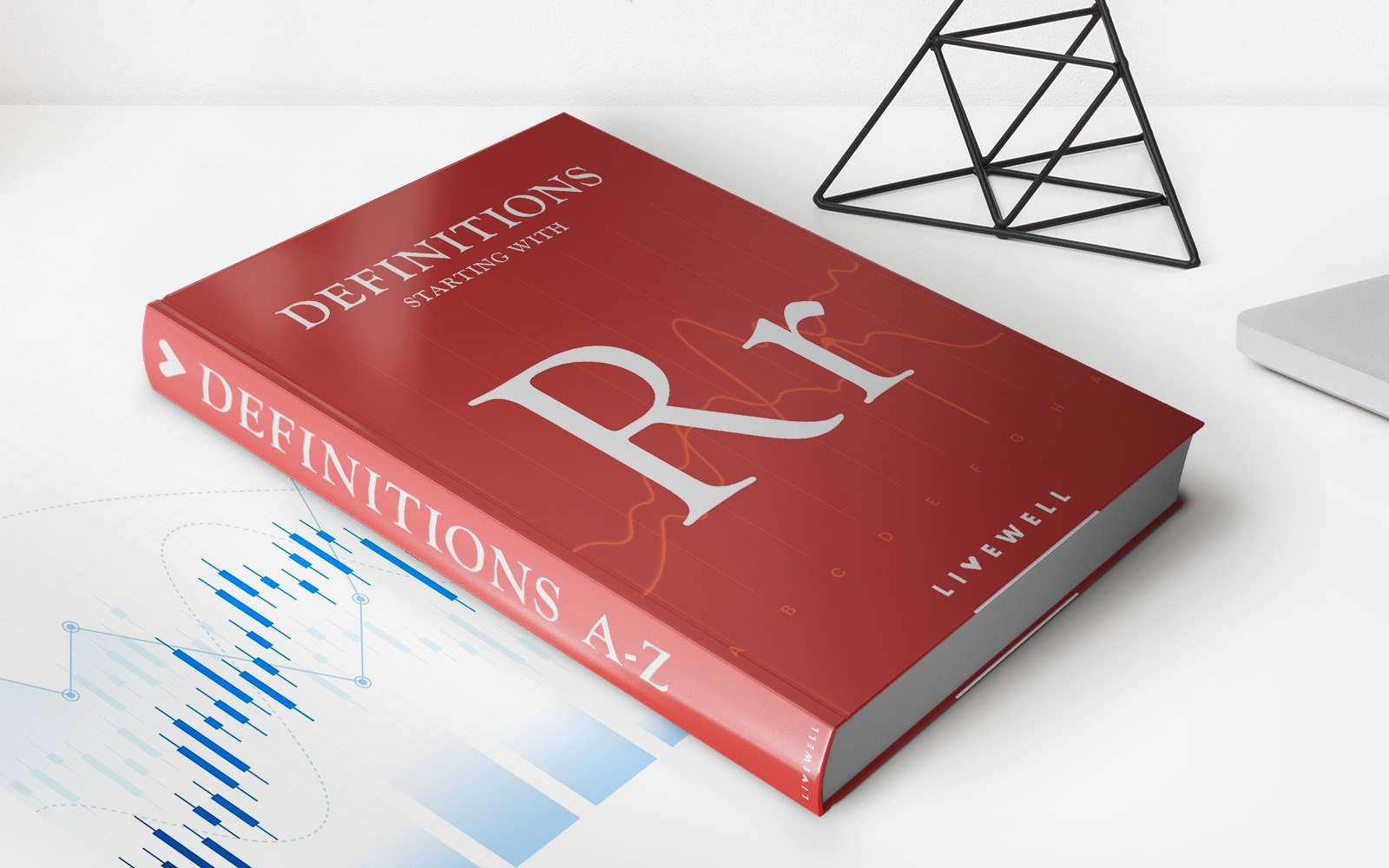Home>Finance>What Happens If You Just Pay The Minimum Payment On Your Credit Card


Finance
What Happens If You Just Pay The Minimum Payment On Your Credit Card
Published: February 26, 2024
Find out the consequences of making only the minimum payment on your credit card. Learn how it impacts your finances and future debt. Get expert advice on managing your finances.
(Many of the links in this article redirect to a specific reviewed product. Your purchase of these products through affiliate links helps to generate commission for LiveWell, at no extra cost. Learn more)
Table of Contents
Introduction
Credit cards have become an integral part of modern-day financial transactions, offering convenience and flexibility to users. However, the ease of swiping a credit card often leads to overlooking the potential long-term consequences of making only the minimum payment each month. Understanding the implications of this common practice is crucial for anyone holding a credit card.
Paying the minimum amount due on a credit card may seem like a manageable way to stay afloat, especially when faced with financial constraints. However, it's important to delve deeper into the impact of this approach. By exploring the dynamics of minimum payments, we can gain valuable insights into how they affect overall debt, interest accumulation, and financial well-being. In this article, we will dissect the consequences of making only the minimum payment on a credit card, shedding light on the potential pitfalls and offering alternative strategies for managing credit card debt.
While the allure of minimum payments lies in their short-term relief, the long-term implications can be substantial. By unraveling the intricacies of this common practice, we aim to equip readers with the knowledge needed to make informed decisions about managing credit card debt. Let's embark on a journey to uncover the hidden truths behind minimum payments and explore the alternatives that can pave the way to financial stability and freedom.
Understanding Minimum Payments
When you receive your credit card statement, it typically includes a “minimum payment due” amount. This is the lowest sum you are required to pay by the due date to keep your account in good standing. The minimum payment is calculated based on various factors, including your outstanding balance, interest rate, and a percentage of the total balance. While it may seem like a lifeline during financially challenging times, it’s essential to comprehend the mechanics behind minimum payments.
Minimum payments are designed to provide a temporary reprieve for cardholders who may be unable to pay their full balance. However, it’s important to recognize that making only the minimum payment has significant implications. The structure of minimum payments means that a substantial portion often goes towards covering interest, with only a fraction contributing to reducing the principal balance. This perpetuates the cycle of debt, as the overall balance decreases at a sluggish pace, leading to prolonged repayment periods and increased interest accrual.
Furthermore, the convenience of minimum payments can mask the true cost of credit card debt. Many individuals may not fully grasp the long-term repercussions of perpetually paying the minimum. As interest continues to accumulate on the remaining balance, the overall debt burden grows, potentially spiraling out of control. It’s crucial to recognize that minimum payments, while offering temporary relief, can result in a prolonged and costly journey toward debt freedom.
Understanding the structure and implications of minimum payments is fundamental to making informed decisions about managing credit card debt. By gaining insight into how minimum payments impact the dynamics of debt repayment, individuals can take proactive steps to mitigate the potential pitfalls and work towards achieving financial stability.
The Impact of Paying Only the Minimum
Opting to pay only the minimum amount due on your credit card may provide temporary relief, but it sets in motion a chain of financial repercussions that can have lasting effects. One of the most significant impacts of this approach is the prolonged repayment period. By allocating a minimal portion of the minimum payment towards the principal balance, the debt reduction process is significantly extended. What may have initially seemed like a manageable debt can quickly snowball into a long-term financial burden.
Moreover, the accumulation of interest presents a formidable challenge for those making only the minimum payment. A substantial portion of each minimum payment often goes towards servicing the interest accrued on the outstanding balance, leaving a minimal dent in the actual debt. This perpetuates a cycle where the interest continues to mount, impeding progress in reducing the principal balance. As a result, individuals find themselves trapped in a cycle of debt, with the prospect of achieving debt freedom becoming increasingly elusive.
Another critical impact of paying only the minimum is the overall cost of the debt. As interest compounds over time, the total amount repaid far exceeds the initial balance. What may have started as a modest credit card debt can quickly balloon into a substantial financial liability due to the relentless accrual of interest. This not only strains personal finances but also hampers the ability to allocate resources towards other essential expenses and financial goals.
Furthermore, the impact of paying only the minimum extends beyond financial implications. The stress and anxiety associated with carrying persistent debt can take a toll on mental well-being, affecting overall quality of life. The burden of prolonged debt repayment can permeate various facets of an individual’s life, creating a pervasive sense of unease and hindering the pursuit of long-term financial security.
By comprehending the multifaceted impact of making only the minimum payment on a credit card, individuals can gain a deeper understanding of the challenges posed by this approach. Recognizing the long-term consequences empowers individuals to explore alternative strategies for managing credit card debt and chart a course towards financial freedom.
Long-Term Consequences
The decision to consistently pay only the minimum amount due on a credit card can lead to a myriad of long-term consequences, reshaping the financial landscape for individuals. One of the most significant long-term effects is the substantial increase in the total cost of the debt. As interest continues to accrue on the outstanding balance, the overall amount repaid can far surpass the initial debt, amplifying the financial strain and impeding progress towards achieving other monetary goals.
Moreover, the prolonged repayment period resulting from making only the minimum payment can have far-reaching implications. What may have initially seemed like a manageable debt can transform into a protracted financial burden, restricting the ability to allocate resources towards savings, investments, or essential expenses. This extended debt journey can hinder individuals from attaining financial milestones and erode their financial well-being over time.
Another long-term consequence is the potential damage to one’s credit score. Consistently paying only the minimum amount due may signal financial distress to credit reporting agencies, potentially impacting creditworthiness. A lower credit score can limit access to favorable loan terms, impact employment opportunities, and impede the ability to secure housing or obtain essential services, further exacerbating the repercussions of carrying persistent credit card debt.
Furthermore, the psychological toll of prolonged debt repayment cannot be overlooked. The persistent burden of debt can lead to heightened stress, anxiety, and a sense of financial insecurity, impacting overall well-being. The mental and emotional strain stemming from the weight of long-term debt can permeate various aspects of life, affecting relationships, career decisions, and overall quality of life.
Understanding the long-term consequences of making only the minimum payment on a credit card is pivotal in guiding individuals towards informed financial decisions. By recognizing the enduring impact of this approach, individuals can proactively seek alternative strategies for managing credit card debt, mitigating the long-term repercussions, and working towards reclaiming financial stability and freedom.
Alternatives to Paying the Minimum
While the allure of paying only the minimum on a credit card may provide temporary relief, exploring alternative approaches can pave the way to long-term financial stability. One effective strategy is to prioritize paying more than the minimum amount due each month. By allocating additional funds towards reducing the principal balance, individuals can expedite the debt repayment process and minimize the accrual of interest, ultimately saving money in the long run.
Consolidating credit card debt through a balance transfer to a card with a lower interest rate can also offer a viable alternative. This allows individuals to streamline their debt and potentially reduce the overall interest burden, providing a more manageable path towards debt freedom. However, it’s essential to carefully assess the terms and conditions of the new card to ensure it aligns with your financial goals.
Another alternative is to explore debt consolidation loans, which enable individuals to combine multiple debts into a single, structured repayment plan. This can simplify debt management and, in some cases, offer lower interest rates, creating a more sustainable approach to debt repayment. However, it’s crucial to conduct thorough research and seek professional advice to determine the suitability of this option based on individual financial circumstances.
Engaging in open communication with credit card issuers can also yield alternative arrangements, such as negotiating lower interest rates or setting up a feasible repayment plan. Many issuers are willing to work with cardholders facing financial challenges to establish mutually beneficial solutions, providing a pathway to navigate through difficult financial circumstances effectively.
Furthermore, cultivating a proactive approach to financial management, including budgeting, expense tracking, and seeking additional sources of income, can empower individuals to tackle credit card debt more effectively. By adopting a holistic approach to financial well-being, individuals can gain greater control over their monetary resources and work towards sustainable debt management.
Exploring these alternatives to paying only the minimum on a credit card equips individuals with the tools to navigate the complexities of debt repayment effectively. By leveraging these strategies, individuals can chart a course towards financial freedom, alleviate the burden of persistent debt, and cultivate a more secure financial future.
Conclusion
Managing credit card debt requires a nuanced understanding of the implications of paying only the minimum amount due. While this approach may offer immediate respite, the long-term consequences can significantly impact financial well-being, creating a cycle of prolonged debt repayment and escalating interest costs. By unraveling the dynamics of minimum payments and their enduring effects, individuals can make informed decisions to navigate through the complexities of credit card debt more effectively.
Recognizing the multifaceted impact of paying only the minimum on a credit card empowers individuals to explore alternative strategies for debt management. Prioritizing higher payments, consolidating debt, engaging in open communication with credit card issuers, and adopting proactive financial management practices can pave the way towards sustainable debt repayment and eventual financial freedom.
Ultimately, the journey towards reclaiming financial stability and freedom from credit card debt begins with a comprehensive understanding of the implications of minimum payments and the proactive pursuit of alternative approaches. By leveraging these insights and strategies, individuals can embark on a path towards alleviating the burden of persistent debt, mitigating long-term financial repercussions, and cultivating a more secure and resilient financial future.
Empowered with knowledge and equipped with effective debt management strategies, individuals can navigate through the complexities of credit card debt with confidence, working towards achieving their financial goals and embracing a future free from the constraints of prolonged debt repayment.














